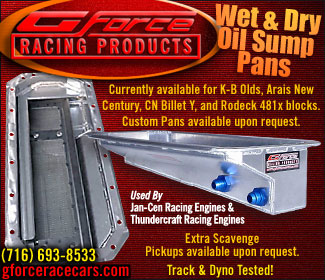

If you take close look at this pedal, you
can see two different master cylinder pushrod
mount holes à one is for a booster-equipped
application, while the other is for a non-boosted
brake arrangement. For a late model, non-boosted
manual application, companies such as MPR
modify the pedal assembly by creating a
mount that is higher (up the pedal) than
the original. By moving the mount position
higher, the pedal ratio is improved. |
It's easy to see that as you increase the pedal
force or the pedal ratio (or both), the stroke
of the master cylinder is shortened (brake line
pressure is unaffected). When you increase the
size of the master cylinder piston, you decrease
the output pressure of the master cylinder.
A smaller master cylinder piston will exert
more line pressure with the same amount of force
(pedal ratio) than a master cylinder piston
with a larger piston area. Unfortunately, there's
another catch: Since the brake line fluid pressure
is working against the surface of the wheel
cylinder (or disc brake piston), increasing
the area of the cylinder will increase brake
torque. That's why foot brake racers will often
replace wheel cylinders with larger models.
A good example is an early GM wheel cylinder.
Typically they'll measure 3/4-inch. These can
be replaced with either 7/8-inch or 15/16-inch
cylinders (some domestic station wagons had
huge drum brake wheel
ADVERTISEMENT
 |
cylinders).
By increasing the size of the wheel cylinder,
the "clamping" power of the drum brakes will
also increase, which in turn makes it easier
to hold the car on the starting lineagainst
the torque converter. The bottom line is to
find a wheel cylinder that works for your application.
Playing with wheel cylinders (bore sizes) also
has an effect upon brake pedal "feel". Just
remember this when mixing and matching OEM parts.
What this all means is if you need to improve
the stopping power of your car, or if you need
to reduce the effort it takes to depress the
pedal, then you have several options: (A) Decrease
the master cylinder bore size; (B) Increase
the pedal ratio; (C) Increase the wheel cylinder
bore size. If you increase the pedal ratio,
you'll have more travel at the master cylinder
piston. If you decrease the master cylinder
bore size, the piston has to travel further
to move the same amount of fluid. Typically,
a master cylinder has approximately 1-1/2-inch
to 1-3/4-inch of stroke (travel). The idea here
is coordinate the pedal ratio with the bore
size to arrive at approximately half of the
stroke (roughly 1-inch) in order to make the
brakes feel comfortable, and of course, to bring
the car to a halt.
| Sources
|
Mark
Williams Enterprises
765 South Pierce Avenue
Louisville
Colorado 80027
PH# 303-665-6901 |
MPR
Race Cars
5851 Scotch Settlement Road
Almont, Michigan 48003
PH# 810-798-8998 |
|